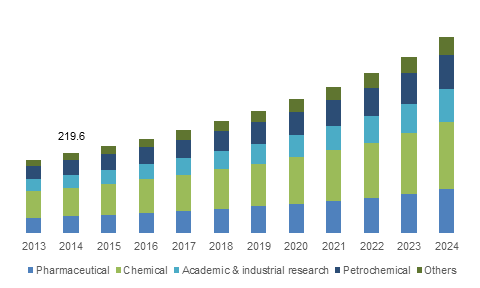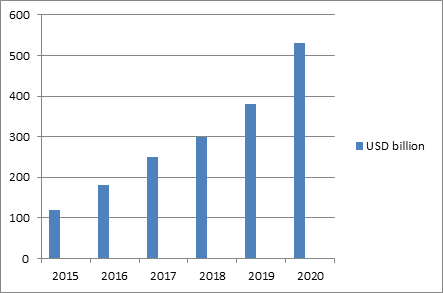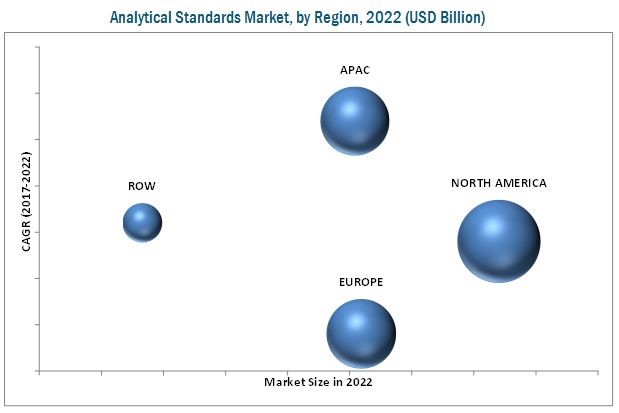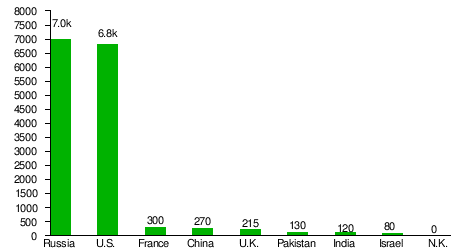Theme: Exploring New Concept and Achieving Future Advancement in Chemistry World
Chemistry Congress 2022
ConferenceSeries is a renowned organization that organizes highly notable conferences throughout the globe. Currently we are bringing forth “15th International Conference on Chemistry” (Chemistry Congress 2022) scheduled to be held during September 23-24, 2022 at London,UK. The conference invites all the participants across the globe to attend and share their insights and convey recent developments in the field of Chemistry.
Who should attend?
- Chemistry Scientists
- Clinical Services Managers
- Druggist
- Drug development Research Laboratories
- Chemistry Researchers
- Chemical Engineers
- Drug development companies
- Professors and Academicians related to Chemistry
- Students
Why to exhibit/sponsor?
- Build relationships and develop new markets
- Raise awareness of your brand
- To get the knowledge on New products of your competitors
- To Strengthen your bond with existing customers
- Learn about new developments in your industry
- To interact directly to your target market
- Optimize your sales and lead generation strategy
- Track 1: Advanced chemistry
- This session of Applied and Advanced Chemistry is concerned with doing basic researches on a variety of chemical fields like metal compounds, inorganic and organic compounds, polymers, proteins. The main motto of this field of chemistry is to make the application of these researches in various fields and contribute to the development.
- Track 2: Emerging Trends in Drug Design
- The session of Drug Design is designed to show its evolution as a special domain of medicinal chemistry featuring the mélange of drug design . Having largely expanded topics for the coverage like Drug metabolism and interactions, plus new coverage of Applications of ADME in early drug discovery, System Inhibitors, Targeting Complex Membrane Proteins, and Lead Optimization for Drug Safety will make the session highly enthusiastic and cognizant for all the attendees.
- Track 3: Technological advancement in Organic Synthesis
- The session of Organic synthesis hovers under the research in the synthesis of organic compounds via organic reactions. Due to a higher level of complexity, organic molecules have now been evolved to such a broader domain that its study of synthesis is now done in a separate branch of chemistry. Governing on these facts, this session will be featuring a deep discussion on the synthesis of both inorganic and highly complexed organic compounds.
- Track 4: Latest Discoveries in Green Chemistry
- This session of Green chemistry is focused on the designing of products and processes that minimize the use and generation of hazardous substances. with all aspects of advanced nanomedicine and drug delivery. The current scenario speaks that this is new and developing part of chemistry which mainly works for developing the alternatives for energy generation.
- Track 5: Modern Approach Towards Pharmaceutical Chemistry
- In this session of Pharmaceutical Chemistry, the detailed explorations will be concerned with the study of drugs, drug delivery, absorption, metabolism and drug development. Today, Pharmaceutics with chemistry is used globally as an effective measure for curing or being a remedy for many diseases, improving quality assurance and advancing analytical techniques in pharmacology and metabolism as well.
- Track 6: Applications of Polymers in Synthetic chemistry
- This session is associated with polymer chemistry which is concerned with the chemical synthesis and chemical properties of polymers. Polymer chemistry is a multidisciplinary science that deals with the chemical synthesis and chemical properties of polymers which were considered as macromolecules. Polymer and Biochemistry is having a very strong prospect to have a discussion due to their consistent usage in different forms.
- Track 7: Technical Aspects of Analytical Chemistry
- This session of Analytical chemistry deals with the science of obtaining, processing, and communicating information about the composition and structure of matter. With the advancement of demands in certain parameters like accuracy, precision, accurate control on the chemical composition of materials has made the researches in analytical chemistry more prevalent in the present day.
- Track 8: Major Challenges in Environmental and Atmospheric chemistry
- This session seeks to represent a great understanding on atmospheric issues with original research, contemporary developments in industrial waste and water treatment, spectro-analytical method, atmospheric modelling, satellite management, weather forecasting and independent study, global warming science and also allow possible solutions to be tested for upcoming environmental problems and the effects of changes in government policy evaluated.
- Track 9: Opportunities and Challenges in Drug Design
- This session of Drug Design is designed to showcase the troubleshoots coming in the way of this noble approach towards the drug design, and the advanced and actual directional methods which can be applied on a multidisciplinary and transdisciplinary aspect to enhance the further opportunities in this field.
- Track 10: Network Driven Drug Design
- This session of Network-Driven drug discovery is designed to visualize and understand the bigger picture of cells and disease mechanisms which would ultimately lead to an efficient way of creating better drugs. As a whole, it is basically an optimized and improvised version of this target driven drug discovery and can be considered as-A computational network biology approach to drug discovery.
Welcome to the Global Experts Meeting on Chemistry 2018 at Singapore which will be held on May 17-19, 2018. This Chemistry Congress-2018 is basing on the theme “Exploring New Concept and Advancing Future Advancement in Chemistry World” which extensively covers all aspects on scientific and technical advances in the field of Chemistry. Singapore is a highly developed marketing economy, based on its trades. Along with Hong Kong, South Korea, and Taiwan, Singapore is one of the original Four Asian Tigers, but has exceed its peers in terms of GDP per capita. Between 1965 and 1995, growth rates averaged around 6 per cent per annum, make a mark change in the form of the living standards of the population. The Singaporean economy is known as one of the free, innovative, competitive, dynamic and most business-friendly.
As the demand for chemicals, from basic Petrochemicals industries, are increasing rapidly in recent years as Asia economies continue to develop at different paces. Singapore is considered as the one of the world's major chemical hubs. According to Singapore's Economic Development Board, Singapore is now among the top 10 petrochemical hubs in the world. Together, Singapore's petrochemicals and specialties sectors contributed to S$33.7 billion of the manufacturing output in 2007. It is estimated that with the new launch of ExxonMobil and Shell will increase Singapore’s total ethylene output in coming 2011 from 2 million tons per annum to 4 million tons per annum.
The Institute of Chemical and Engineering Sciences (ICES) which is Located on Jurong Island, doing world class research programs in developing new processes and applications for the chemical industry. Currently over 1000 specialty companies are there in Singapore, many of which are very high profile companies such as 3M, Evonik Degussa, Huntsman and Siltronic. As per this year expected growth is 2.5% according to Monetary Authority of Singapore(MAS) which is 2.3% in the previous year.However day by day chemistry growth in Singapore became higher and higher.
For more details please visit: http://chemistrycongress.conferenceseries.com/
Scope and Importance:-
Chemistry is a broad, diverse and multidisciplinary field. It is continuous interaction with basic disciplines and is also contributing to meet all Grand Societal Challenges. Chemistry is the study of how matter comports on a molecular and atomic level and how chemical reactions occur. Chemistry blends the principles of physics and chemistry to study the physical characteristics, or properties, of molecules. By understanding these properties, you learn more about the way in which molecules are put together, as well as how the genuine structure of a chemical is impacted by these properties.
The meeting will be a multidisciplinary gathering and present major areas such as organic, inorganic, forensic, nuclear chemistry and their policies. The forum of Scientists, students and researchers from all corners of the globe, come together to discuss future of chemistry science. Each session of the meeting will be included with expert lectures, poster and discussions, join us to design sustainable processes, innovations by which and how these strategies drive new policies, advances the business and human health protection. We are glad to invite you on behalf of organizing committee to join us, where you are the decision maker for future.
Branches of Chemistry Includes:
· Organic and Inorganic chemistry
· Physical & Synthetic chemistry
· Geochemistry & Astrochemistry
· Polymer chemistry & Biochemistry
· Analytical and Biophysical chemistry
· Material chemistry
· Nano chemistry
· Forensic and Medicinal chemistry
· Mineralogy and Petralogy
· Radiochemistry
· Industrial and Engineering chemistry
· Computational Chemistry
· Nuclear and Quantum Chemistry
· Environmental and Atmospheric chemistry
· Supramolecular and Surface chemistry
· Chemical Engineering
· Green and Sustainable Chemistry
· Neurochemistry
· Agrochemistry and Archaeometry
· Applied and Advanced Chemistry
About Venue:
London was the world's largest city from about 1831 to 1925,[86] with a population density of 325 per hectare.[87] London's overcrowded conditions led to cholera epidemics,[88] claiming 14,000 lives in 1848, and 6,000 in 1866.[89] Rising traffic congestion led to the creation of the world's first local urban rail network. The Metropolitan Board of Works oversaw infrastructure expansion in the capital and some surrounding counties; it was abolished in 1889 when the London County Council was created out of county areas surrounding the capital.
London is the seat of the Government of the United Kingdom. Many government departments, as well as the prime minister's residence at 10 Downing Street, are based close to the Palace of Westminster, particularly along Whitehall.[128] There are 73 members of Parliament (MPs) from London, elected from local parliamentary constituencies in the national Parliament. As of December 2019, 49 are from the Labour Party, 21 are Conservatives, and three are Liberal Democrat.[129] The ministerial post of minister for London was created in 1994. The current Minister for London is Paul Scully MP.[130].
London, also known as Greater London, is one of nine regions of England and the top subdivision covering most of the city's metropolis.[note 4] The small City of London at its core once comprised the whole settlement, but as its urban area grew, the Corporation of London resisted attempts to amalgamate the City with its suburbs, causing "London" to be defined several ways.[141]
Forty per cent of Greater London is covered by the London post town, in which 'LONDON' forms part of postal addresses.[142][143] The London telephone area code (020) covers a larger area, similar in size to Greater London, although some outer districts are excluded and some just outside included. The Greater London boundary has been aligned to the M25 motorway in places.[144]
.
Why to Attend???
- Global Experts Meeting on Chemistry-2018 will be the greatest gathering devoted to Chemistry which will be the biggest opportunity for Academic Session.
- From the Conference you can gain visibility in your field.
- In this Global Conference everyone can Explore their knowledge on the Chemistry and related fields.
- Networking with peers
- This is the opportunity to position yourself as an expert
· Meet Your Objective Business area with people from and around the world focused on getting some answers concerning Chemistry and Chemical plants, this is the most obvious opportunity to accomplish the greatest accumulation of individuals from wherever all through the World.
Target Audience:
- Chemistry Scientists/Research Professors
- Junior/Senior research fellows of Chemistry/ Chemical Engineering/ Pharmaceutical Science
- Chemistry / Nanoscience / Polymer/ Chemical Companies
- Chemistry / Chemistry Associations
- Chemical Engineers
- Chemists /Physicists
- Biotechnology
Societies/Industries/universities Associated with Chemistry:
· Singapore Chemical Industry Council
· Alpha Chi Sigma
· American Association for Clinical Chemistry
· American Chemical Society
· American Crystallographic Association
· Canadian Society for Chemical Technology
· Chinese-American Chemical Society
· Council for Chemical Research
· Chemical Research Society of India
· Japan Association for International Chemical Information
· Swedish Chemical Society
Major Chemistry Associations around the Globe:
· Royal Society of Chemistry
· American Chemical Society
· The Electrochemical Society
· Italian Chemical Society
· Royal Netherlands Chemical Society
· Chinese Chemical Society
· Royal Australian Chemical Institute
· International Society of Heterocyclic Chemistry
· European Society for Applied Physical Chemistry
· American Institute of Chemists
· The Korean Chemical Society
· Japan Association for International Chemical Information
· International Union of Pure and Applied Chemistry (IUPAC)
· American Association for Clinical Chemistry
· American Society for Mass Spectrometry
· California Society of Cosmetic Chemists
- Canadian Biomaterials Society
- Federation of European Materials Societies
- International Organization of Materials
- International Union of Crystallography
- International Organization of Materials
- Metals and Minerals Societies
- Society of Nanotechnology
Major Chemistry Associations in Singapore:
· Singapore Chemical Industry Council
· Swedish Chemical Society
Target Audience:
Academia 61%
Industry 21%
Others 18%

Figure 1: Target Audience
Top Universities in Singapore:
· National University of Singapore
· Singapore Management University
· Singapore Management University
· Ngee Ann Polytechnic
· Nanyang Polytechnic
· National Institute of Education Singapore
· Singapore University of Technology and Design
· Singapore Polytechnic
Figure 2: Statistical Analysis of Universities
Market Value on Chemistry Research: -
The overall flow chemistry market share is majorly propelled by numerous value added advantages offered by the process as compared to batch reactors. The process offers low capital and maintenance cost, minimum raw material requirement, which subsequently results in reduced operational cost. Furthermore, it also provides efficient & easy reactants mixing, superior heat & mass transfer along with enhanced reaction control. These process characteristics is analyzed to positively impact on the global industry growth over the estimated period.
Global fine chemicals market is expected to witness a steady growth during the forecast period, this growth of global fine chemicals market is expected to be driven by growth of the major end use industries. Adapting and accepting flow chemistry process and technology will help the chemical manufacturing companies to reduce these toxic gases and thereby will boost the global flow chemistry market size by 2024. Pharmaceuticals and agrochemicals, being major consumers of fine chemicals, the growth in these industries is in turn expected to fuel the growth of global fine chemicals market during the forecast period. Moreover, growing demand from developing countries, especially those in Asia Pacific, is expected to result in growth of global fine chemicals market. A major trend witnessed in global fine chemicals market is that the companies producing fine chemicals are channelizing efforts towards development of efficient processes and newer products in order to gain a competitive advantage which eventually translates into a higher share in global fine chemicals market.
Chemistry Market By End-User
· Pharmaceutical
· Chemical
· Academic & industrial research
· Petrochemical
· Others

Market Growth of Chemistry Research in the last and upcoming ten years:
The global clinical chemistry analyzers market was estimated at $8,965 million in 2014. This market is expected to grow at a CAGR of 5.52% between 2014 and 2019, to reach $11,728.01 million in 2019. Global chemical production (excluding pharmaceuticals) will probably grow by 3.4% in 2017, the same pace as 2016 (+3.4%). We anticipate a marginally higher expansion rate in the advanced economies (2016: +0.9%, 2017: +1.1%). Growth in the emerging markets will presumably weaken somewhat (2016: +5.4%, 2017: +5.1%). The global clinical chemistry analyzers market was estimated at $8,965 million in 2014. This market is expected to grow at a CAGR of 5.52% between 2014 and 2019, to reach $11,728.01 million in 2019.
Funds allotted to Chemistry and Chemical Companies: -
The world’s 50 largest chemical corporations control a global market valued at $697 billion in 2009. Dow Chemicals and many other chemical companies around the world provide strong industry exposure for investors, including Germany's BASF, China's Sinopec, Saudi Basic Industries Corporation and the Swiss company Ineos. These companies are among the largest producers of chemical products, and chemical manufacturing is either very significant or an exclusive part of their business models.
At long last, industry (from little new businesses to vast universal partnerships) gives a significant part of the rest of, which give both to graduate research assistantships and support for students leading exploration on a venture.
Apart from the industrial personnel where most of the research work is done, other research communities include:-
- Academicians include Student community.
- Researchers include Post docs, Research Associates.
- Scientists include Professors, Associate professors, and Assistant professor.
- Industries include Presidents, CEO’s, and R&D Managers.
Market Report of Chemistry:
· The global adhesive and adhesive-applying equipment market should reach $74.5 billion by 2022 from $57.8 billion in 2017 at a compound annual growth rate (CAGR) of 5.2%, from 2017 to 2022.
· The global market volume for refinery catalysts should reach 2,234.3 metric kilotons by 2021 from 2,019 metric kilotons in 2016 at a compound annual growth rate (CAGR) of 2.0%, from 2016 to 2021. The global market for oilfield process chemicals should reach $29.6 billion by 2021 from $26.9 billion in 2016 at a compound annual growth rate (CAGR) of 2%, from 2016 to 2021.
· The global consumption of flame retardant chemicals reached nearly 5.4 billion pounds in 2016. The market should reach 5.6 billion pounds in 2017 and 7.3 billion pounds by 2022, growing at a compound annual growth rate (CAGR) of 5.4%, from 2017 to 2022.
· The global agrochemical market should reach $266.0 billion by 2021 from $213.2 billion in 2016 at a compound annual growth rate (CAGR) of 4.5%, from 2016 to 2021.
· The U.S. market for fluorochemical and polymers is expected to increase from 2.1 billion pounds in 2016 to nearly 2.4 billion pounds in 2021 at a compound annual growth rate (CAGR) of 2.3% for 2016-2021. The alternative U.S chemical end-use product market is expected to increase from $149.9 billion in 2016 to an estimated $345.6 billion by 2021. It should reach $884.1 billion by 2026, with a compound annual growth rate (CAGR) of 19.4% for the period of 2016-2026.
Materials Chemistry:
Today, many materials chemists are synthesizing functional device materials, and the discipline is often seen as directed towards producing materials with function—electrical, optical, or magnetic. Material Chemistry is involved in the designing and processing of materials. Global market for catalysts is expected to reach $28.5 billion by 2020, growing at a CAGR (2015 to 2020) of over 3%. Asia-Pacific is having the largest market for catalysts accounting for more than 35% share.

Figure 5: Growth forecast of material chemistry
Nanochemistry
The global market for CNT primary grades was $158.6 million in 2014. This market is projected to reach $167.9 million in 2015 and $670.6 million in 2019, with a compound annual growth rate (CAGR) of 33.4% from 2014 to 2019. The global market for nanotechnology products was valued at $22.9 billion in 2013 and increased to about $26 billion in 2014. This market is expected to reach about $64.2 billion by 2019, a compound annual growth rate (CAGR) of 19.8% from 2014 to 2019.

Global Advanced Chemistry Market:
· Lucintel’s market reports provide quantitative and qualitative data analysis for the global and regional markets. These industry reports study annual trends; provide forecast statistics; detail the industry’s drivers and challenges; discuss growth challenges at various levels. The global overactive bladder treatment market is projected to reach USD 4.19 Billion by 2022 from USD 3.63 Billion in 2017, at a CAGR of 2.9%. The key players in the global overactive bladder treatment market are Astellas Pharma, Inc. (Japan), Pfizer, Inc. (U.S.), Allergan, Plc. (Ireland), Teva Pharmaceutical Industries Limited (Israel), Mylan N.V. (U.S.), Medtronic plc (Ireland), Endo International plc (Ireland), Sanofi (France), Hisamitsu Pharmaceutical Co., Inc. (Japan), Aurobindo Pharma Limited (India), Apotex Inc. (Canada), and Cogentix Medical, Inc. (U.S.). The global market volume for refinery catalysts should reach 2,234.3 metric kilotons by 2021 from 2,019 metric kilotons in 2016 at a compound annual growth rate (CAGR) of 2.0%, from 2016 to 2021. The global market for oilfield process chemicals should reach $29.6 billion by 2021 from $26.9 billion in 2016 at a compound annual growth rate (CAGR) of 2%, from 2016 to 2021.
Analytical chemistry:
The global analytical standards market is projected to reach USD 1.73 Billion by 2022 from USD 1.27 Billion in 2017, at a CAGR of 6.3%. The process analytical technology (PAT) market is poised to reach USD 3.30 Billion by 2021 from USD 1.77 Billion in 2016, at a CAGR of 13.3% from 2016 to 2021. The global process analytical technology market is segmented on the basis of technique, measurement, products and services, end user, and region. On the basis of technique, the process analytical technology market is segmented into spectroscopy, chromatography, particle size analysis, capillary electrophoresis, and other techniques (calorimetry, thermal analysis, total organic carbon analysis, and FIA).

Pharmaceutical Chemistry
The global pharmaceutical packaging equipment market is estimated to grow at a CAGR of 6.8% from 2017 to 2022 to reach USD 8.24 Billion approximately by 2022. The growth of the market can be attributed to factors such as cost containment in pharma R&D, growth in funding for generics and biopharmaceutical research, and technological advancements in labeling and serializations solutions. The development of production lines for small batch size and research purposes, growing focus of pharmaceutical manufacturers to cut operational costs, and rising emphasis on labeling and serialization for anti-counterfeiting of drugs are the key trends in the market.

Nuclear Chemistry:
The global nuclear energy demand exceeded 2,400 TWh in 2014 and it is estimated to grow at a CAGR of over 4% from 2015 to 2022. Nuclear energy accounted over 11% of the global energy generation in 2014. Increasing power and energy demand from households and industrial sectors is expected to fuel market growth over the forecast period.

Polymer Chemistry:
The global PET preforms market was at USD 17.14 Billion in 2016 and is projected to reach USD 23.35 Billion by 2022, at a CAGR of 5.31% from 2017 to 2022. Key companies profiled in the global PET preforms market research report include Retal Industries Ltd. (Cyprus), Plastipak Holdings, Inc. (US), RESILUX NV (Belgium), ALPLA Werke Alwin Lehner GmbH & Co KG (Austria), Zhuhai Zhongfu Enterprise Co. Limited (China), Society General Techniques (France), Indorama Ventures Public Company Limited (Thailand), KOKSAN Pet Packaging Industry Co. (Turkey), Taiwan Hon Chuan Enterprise Co., Ltd (Taiwan), and Rawasy Al Khaleej Plastic Ind. (UAE).

Meneralogy and Petralogy:
The precious metal catalysts market size is estimated to grow from USD 14.37 Billion in 2017 to USD 19.41 Billion by 2022, at a CAGR of 6.19%. The base year considered for the study is 2016, and the market size is projected from 2017 to 2022. The major players in the precious metal catalysts market include BASF SE (Germany), Evonik Industries AG (Germany), Johnson Matthey Plc (U.K.), Heraeus Group (U.K.), Clariant International Ltd (Switzerland), Umicore SA (Belgium), Alfa Aesar (U.S.), and Vineeth Precious Catalysts Pvt. Ltd. (India).
Industrial Chemistry:
The global adhesive and adhesive-applying equipment market should reach $74.5 billion by 2022 from $57.8 billion in 2017 at a compound annual growth rate (CAGR) of 5.2%, from 2017 to 2022.The industrial gases was valued at $66.7 billion in 2014. The market is expected to grow from $68.7 billion in 2015 to $80.9 billion in 2020, a compound annual growth rate (CAGR) of 3.3% from 2015 to 2020.

Conference Highlights
To share your views and research, please click here to register for the Conference.
To Collaborate Scientific Professionals around the World
| Conference Date | September 23-24, 2022 | ||
| Sponsors & Exhibitors |
|
||
| Speaker Opportunity Closed | |||
| Poster Opportunity Closed | Click Here to View | ||
Useful Links
Special Issues
All accepted abstracts will be published in respective Our International Journals.
Abstracts will be provided with Digital Object Identifier by










